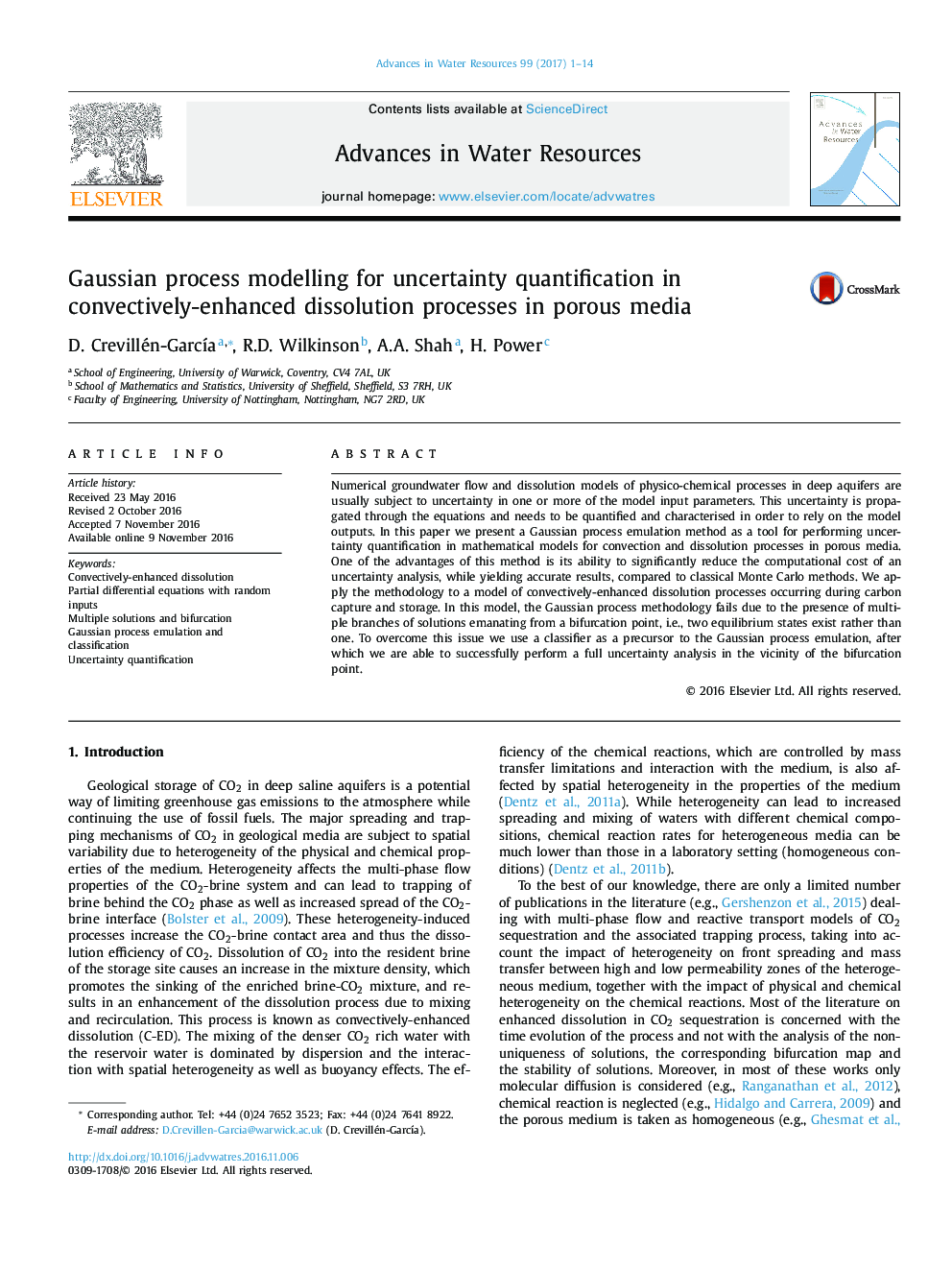| Article ID | Journal | Published Year | Pages | File Type |
|---|---|---|---|---|
| 5763851 | Advances in Water Resources | 2017 | 14 Pages |
â¢Developed an uncertainty quantification approach for convectively-enhanced dissolution.â¢Medium heterogeneity, dispersivity and chemical reaction are included in the model.â¢Multiple (bifurcating) solutions are found, which complicates the uncertainty analysis.â¢We combine Gaussian process classification and regression to incorporate bifurcations.â¢We quantify the effect of a heterogeneous permeability in multiple solution scenarios.
Numerical groundwater flow and dissolution models of physico-chemical processes in deep aquifers are usually subject to uncertainty in one or more of the model input parameters. This uncertainty is propagated through the equations and needs to be quantified and characterised in order to rely on the model outputs. In this paper we present a Gaussian process emulation method as a tool for performing uncertainty quantification in mathematical models for convection and dissolution processes in porous media. One of the advantages of this method is its ability to significantly reduce the computational cost of an uncertainty analysis, while yielding accurate results, compared to classical Monte Carlo methods. We apply the methodology to a model of convectively-enhanced dissolution processes occurring during carbon capture and storage. In this model, the Gaussian process methodology fails due to the presence of multiple branches of solutions emanating from a bifurcation point, i.e., two equilibrium states exist rather than one. To overcome this issue we use a classifier as a precursor to the Gaussian process emulation, after which we are able to successfully perform a full uncertainty analysis in the vicinity of the bifurcation point.
